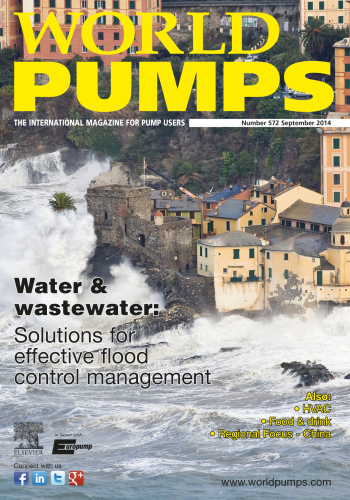
This copy of World Pumps will be distributed in New Orleans, USA at the WEFTEC show. To reflect this Water Quality event, the September issue of World Pumps has a number of water and wastewater features.
Among the applications on page 20 we look at a flood relief scheme in Europe. Following particular bad floods in the south west of the UK, a selection of pumps from The Netherlands were quickly dispatched to help clean up operations. In what was called the ‘biggest pumping operation ever’, the pumps were able to shift 7.3 million tonnes of water per day. Also in the UK, page 26 has a close look at a multimillion pound project that has been put in place to design, manufacture and install a the largest of its type of screw pumps in the world in a newly refurbished pumping station.
Moving to Belgium, on page 28 another application explains how a water-link project delivers nearly 190 million m3 of water to over 700,000 customers annually. Travelling to the other side of the world on page 30 you can read how a giant pipeline through an Australian city has the vital job of transferring drinking water to more than a million residents.
Water & wastewater
Coming onto our water & wastewater features, ‘Solutions for effective flood management’ on page 34 takes the view that while floods are the most commonly occurring type of natural disaster, and although in most cases flooding is inevitable, the harmful effects can be minimised. This means that the notion of ‘avoiding’ floods should be replaced by that of ‘damage limitation’. Here we look at different ways of controlling the effects of flooding, in particular through the use of stormwater tanks and floodgates with pumps.
Finally, we have a little piece of history as Pierre Fabeck recalls the story of the Marly machine – the world’s most expensive pump installation ever built. The project demonstrates three characteristics specific to the pump industry: ingenuity, entrepreneurship and need to rely on existing scale models.





